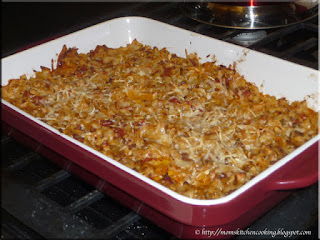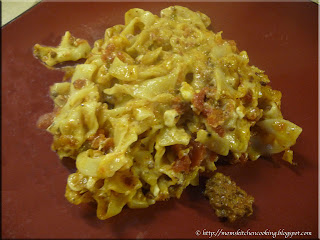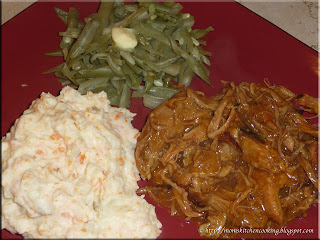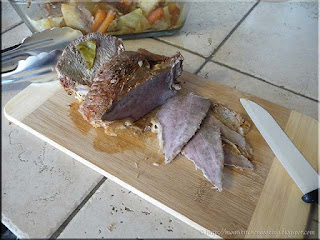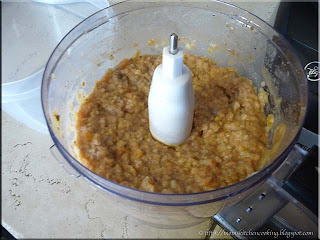There are a multitude of small kitchen appliances available, many of which can save you a substantial amount of money over their lifetime. Some are a more frugal choice than others and as always it depends on your needs. For example, if you are buying store bought frozen waffles to have on hand for quick hot breakfasts, then consider a waffle maker. They start at under $20 on sale ranging into the high end of about $150. Consider too that waffles aren't just for breakfast any more. You can make some rather tasty desserts using waffles and savory waffles can be used in the place of biscuits for dinner. The payback period on a waffle maker is about 6 months to a year depending on how you use it.
One of our kids very generously gifted us with a
Cuisinart 4-Slice Belgian Waffle Maker (WAF-100C). This maker produces waffles with deep pockets to hold more toppings. There are five settings for browning control as well as ready-to-bake and ready-to-eat lights with audible signals. The plates are non-stick so only need washing then a light oiling before use.
Another of our kids who has had a waffle maker for a few years showed me how to use the waffle maker while giving me a few tips. The grandkids and adults enjoyed fresh made waffles for breakfast that morning.
The following week I decided to do a test run myself. I had two goals in mind. The first goal was learning how to use the waffle maker and find the sweet spot for perfect browning. The second goal was to do a comparison of the price of store bought frozen waffles, to those made with a store bought mix, then finally to waffles made with homemade batter.
I had just enough Krusteaz pancake and waffle mix to make four waffles. This is a mix that only requires the addition of water that the guys like for hunt camp. I mixed up the batter then poured into the heated waffle maker.
According to the manual, it takes a bit of experimenting to determine the right amount of batter needed. They suggest two cups of batter poured evenly over the bottom then quickly spread with a heat resistant spatula before closing the lid. Obviously, I have to work on my technique a bit but as my first attempt, I was rather pleased.
The next batch of waffles was made with the basic waffle recipe that came in the Cuisinart manual. I did a test batch by halving the recipe to make 8 waffles. What really impressed me was the higher rise using the homemade batter (right). Clearly, the homemade batter gave nicer results but the true test was the taste.
The waffles made with the store bought mix were good. They were fluffy with a nice flavour. The waffles made with the homemade mix were fluffier with a cleaner flavour (aka no chemical overtones).
Basic Waffles
modified from: Cuisinart Instruction Booklet, WAF-100, Pp. 7
3 c unbleached all-purpose flour
3 tbsp organic granulated sugar
1½ tbsp baking powder
¾ tsp baking soda
¾ tsp sea salt
2½ c milk
½ c plus 1 tbsp vegetable oil
3 large eggs, slightly beaten
Combine the ingredients in the order listed in the bowl of a stand mixer. Blend until smooth. Let the batter rest 5 minutes before using. Pre-heat the waffle maker then pour about 2 c of the batter onto the centre of the lower grid. Spread evenly with a heatproof spatula. Close the lid and cook until the tone sounds. Open lid and carefully remove the waffles.

Overall, I was very impressed at the ease and cost of using a homemade waffle mix. The results in terms of rise and flavour was superior to using a store bought mix. Store bought frozen waffles cost about $4 for 12 or 43¢ each. Homemade waffles using a store bought mix cost about 8¢ each and those using a scratch batter cost about 6¢ each. Now there isn't a huge difference in cost between store bot mix and scratch batter but with scratch you aren't getting all the additives. You are getting 8 ingredients rather than a whole list of chemicals. Another thing you aren't getting with home-made is all that extra packaging. Homemade waffles are about 20% larger than the store bought frozen version so that's something to consider as well.
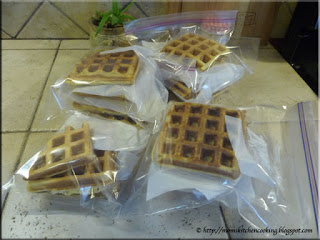
The cooled, stacked waffles were ready for packaging for the freezer. Home-made waffles reheat in the toaster just like store bought so you still have the convenience of a quick, hot breakfast. I packaged 4 waffles per freezer bag each separated by a piece of parchment paper and pressing the air out of the bags. I didn't vacuum seal them as they are meant for short term storage in the freezer.
This is just a really easy way to put healthy, hot breakfasts on the table with a minimal of effort while saving a considerable amount of money. The two batches took me under 15 minutes so I can't complain at being able to stock the freezer with waffles ready to pop into the toaster being time consuming at all. An easy way to do this would be to make a double batch of batter, then freeze what isn't used that day. On the other hand, if you are making waffles for a family and need a larger amount, in a half hour you can easily make 64 waffles by making a triple batch of the basic (recall I halved so double then triple). The cooking time is very minimal so you can really make a lot of these in a very short period of time.




